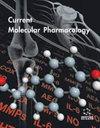Artemisinin Attenuates Isoproterenol-induced Cardiac Hypertrophy via the ERK1/2 and p38 MAPK Signaling Pathways
IF 2.9
4区 生物学
Q3 BIOCHEMISTRY & MOLECULAR BIOLOGY
引用次数: 0
Abstract
Background: Artemisinin (ART) is mainly derived from Artemisia annua, a traditional Chinese medicinal plant, and has been found to affect cellular biochemical processes, such as proliferation, angiogenesis, and apoptosis, in addition to its antimalarial properties. However, its effect on cardiac hypertrophy and the underlying mechanisms remain unclear. Objective: This study aimed to investigate the effect of ART on cardiac hypertrophy and explore its possible mechanisms. Materials and Methods: A rat model was established by intraperitoneal injection of isoproterenol (ISO) for 3 days, and the degree of myocardial hypertrophy was compared among 5 groups: a control (CON) group, an ISO group, and groups treated with different doses of ART (7 mg/kg/d, 35 mg/kg/d, and 75 mg/kg/d). Echocardiography was used to evaluate cardiac function and structure. The cross-sectional area of cardiomyocytes was measured by hematoxylin and eosin (H&E) staining. The heart weight (HW), body weight (BW), and tail length were measured, and the HW/tail length ratio and the HW/BW ratio were calculated. H9C2 rat cardiomyocytes were cultured, and different amounts of ART were added 2 hours before ISO stimulation. Phalloidin staining was used to evaluate the degree of cell hypertrophy. The levels of atrial natriuretic peptide (ANP) and brain natriuretic peptide (BNP) were quantified in rat plasma and cell supernatant using enzyme-linked immunosorbent assay (ELISA), while the expression levels of p- ERK1/2, p-JNK, and p-p38 MAPK were assessed in the myocardium and H9C2 cells via western blot analysis. Conclusion: The mechanism of ART against cardiac hypertrophy was related to inhibition of the ERK1/2 and p38 MAPK signaling pathways. Result: Intragastric administration of ART at a dosage of 35 mg/kg/d or over-mitigated the early-stage cardiac hypertrophy induced by ISO in rats led to a reduction in left ventricular posterior wall diastolic thickness, interventricular septal thickness at diastole, lowered ANP and BNP levels, as well as a decrease in HW/tail length and HW/BW ratio. In vitro studies demonstrated that ART at a concentration of 100 μM inhibited ISO-mediated hypertrophy of H9C2 cells. The ISO group showed a higher p-ERK/GAPDH ratio and p-p38 MAPK/GAPDH ratio than the control group both in vivo and in vitro. Although the p-JNK/GAPDH ratio was increased in the ISO group, there was no statistical difference. The p-ERK/GAPDH and p-p38/GAPDH ratios were significantly lower in the ART group than in the ISO group.青蒿素通过ERK1/2和p38 MAPK信号通路减弱异丙肾上腺素诱导的心肌肥厚
背景:青蒿素(Artemisinin, ART)主要来源于传统中药植物黄花蒿(Artemisia annua),除具有抗疟作用外,还能影响细胞的生化过程,如增殖、血管生成和凋亡。然而,其对心脏肥厚的影响及其潜在机制尚不清楚。目的:探讨ART对心肌肥厚的影响及其可能的机制。材料与方法:采用腹腔注射异丙肾上腺素(ISO) 3 d建立大鼠模型,比较对照组(CON)、ISO组和ART不同剂量组(7 mg/kg/d、35 mg/kg/d、75 mg/kg/d)心肌肥厚程度。超声心动图评价心脏功能和结构。苏木精和伊红(H&E)染色测定心肌细胞横截面积。测定心重(HW)、体重(BW)、尾长,并计算HW/尾长比和HW/BW。培养H9C2大鼠心肌细胞,在ISO刺激前2小时加入不同剂量的ART。用Phalloidin染色评价细胞肥大程度。采用酶联免疫吸附法(ELISA)测定大鼠血浆和细胞上清液中心房钠肽(ANP)和脑钠肽(BNP)的水平,采用western blot法检测心肌和H9C2细胞中p- ERK1/2、p- jnk和p-p38 MAPK的表达水平。结论:ART抗心肌肥厚的机制可能与抑制ERK1/2和p38 MAPK信号通路有关。结果:经胃给药35 mg/kg/d或过度减轻ISO致大鼠早期心肌肥厚,可导致左室舒张后壁厚度、舒张时室间隔厚度降低,ANP和BNP水平降低,HW/尾长和HW/BW比降低。体外研究表明,100 μM浓度的ART可抑制iso介导的H9C2细胞肥大。在体内和体外,ISO组p-ERK/GAPDH比值和p-p38 MAPK/GAPDH比值均高于对照组。ISO组p-JNK/GAPDH比值虽升高,但差异无统计学意义。ART组p-ERK/GAPDH和p-p38/GAPDH比值明显低于ISO组。
本文章由计算机程序翻译,如有差异,请以英文原文为准。
求助全文
约1分钟内获得全文
求助全文
来源期刊

Current molecular pharmacology
Pharmacology, Toxicology and Pharmaceutics-Drug Discovery
CiteScore
4.90
自引率
3.70%
发文量
112
期刊介绍:
Current Molecular Pharmacology aims to publish the latest developments in cellular and molecular pharmacology with a major emphasis on the mechanism of action of novel drugs under development, innovative pharmacological technologies, cell signaling, transduction pathway analysis, genomics, proteomics, and metabonomics applications to drug action. An additional focus will be the way in which normal biological function is illuminated by knowledge of the action of drugs at the cellular and molecular level. The journal publishes full-length/mini reviews, original research articles and thematic issues on molecular pharmacology.
Current Molecular Pharmacology is an essential journal for every scientist who is involved in drug design and discovery, target identification, target validation, preclinical and clinical development of drugs therapeutically useful in human disease.
 求助内容:
求助内容: 应助结果提醒方式:
应助结果提醒方式:


